Starting a Small Business Blog? 10 Things to Know First
- Anna Dunworth

- Jan 17, 2022
- 11 min read
You're probably already considering starting a small business blog if you're on this page. We are here to help you learn more about how to start a business blog.
Read on for ten things you should know before diving into the business blogging world.
Jump ahead:
Video Summary:
1. Defining a Clear Purpose for Your Blog Will Help You Meet Your Goals

The first step to a successful business blog is knowing what you want to accomplish with your blog.
Once you know what you want your blog to do for you, it will be much easier to plan blog content and grow your new blog to help you meet your business goals.
Some popular reasons to launch a blog for your business include:
Bring more traffic to your website by improving your search results rankings
Generate new leads by collecting emails and other contact information
Build an audience who regularly returns to your website
Monetize your blog by charging for subscriptions or exclusive content (online courses, etc.)
Generate sales by directing people from your blog to your products or services
Build your brand by establishing yourself as an expert in your field
Consider your business goals to help you put your finger on the purpose of your business blog. What challenges are you facing? What do you want to improve? Which elements of a business blog do you find most appealing?
2. Consistency is Key to Building an Audience

One of the most common mistakes new bloggers make is failing to maintain a consistent schedule. Decide how many articles a week you would like to post, assign yourself "posting" days, and stick to your plan.
Keep your schedule predictable. As you build your audience, people will expect content at specific times or within consistent time frames (ex: once per week).
Once you launch your blog, you can experiment with different posting times to see when your followers will most likely engage with your content.
Make sure that your schedule is sustainable. It's tempting to jump right in and commit to 3-4 articles weekly, but I'd encourage you to slow down and start small. You'll read different advice about how many articles to post, but at the end of the day, set a schedule that works for you.
If you're reluctant to commit to multiple posts per week, that's okay. Start with one post weekly and see how it goes. You can always adjust your schedule as you analyze your results, and your blog becomes part of your daily routine.
You can take some pressure off by getting ahead of the game before starting. Put together a calendar of blog articles you plan to write over the first four weeks and write them before you launch. Keep a few completed posts in your saved drive for those weeks that just get away from you.
3. A Successful Blog Requires Time and Resources

The sheer number of blogs online can create the (incorrect) impression that these websites are easy to maintain. While keeping your blog running will get easier over time, it does require an investment of time and resources.
If you choose to write your own blog, your investment will be your time writing, promoting, and creating content to share with your audience. How much time you spend on each post depends on how quickly you can create content and how deep y you dive into a topic.
The more you create content for your blog, the faster you will do so. You'll pick up tricks to save time as you learn what works for you and your blog.
Incorporating a recorded video can save you time spent writing the post. Experiment to discover innovative ways to quickly organize the research you need for your post.
If you hire a professional to run your blog for you, your investment will be in resources. A quality blog writer can cost a pretty penny, especially if they are charging by the word for a lengthy post. Personally, I prefer a subscription method – This way, you get a quality post every time, without nickel and diming by the word count.
You can hire an agency (often referred to as a "content mill") to write your articles for you. This is a tempting option for many looking for a large amount of content for a small fee.
However, most blog writing agencies pay their writers 10%-20% of the industry-standard rate. This means that you will often find inexperienced writers among their ranks.
While I don't mean to speak badly of these agencies (I started at one, actually), I just want to emphasize that you get what you pay for when you hire them. You might end up with a killer writer who picks up an occasional article, or you might get a newbie knocking out 5 articles in a row to fund the launch of their own website. It's the luck of the draw, so make sure that you are okay with this before you outsource your work to an agency.
4. Quality Over Quantity Makes an Effective Blog

When starting a new blog, it's easy to get hung up on how many posts your blog is producing.
It can feel like everyone has a different "ideal" number for optimal results, but most hover around 13-16 posts per month. That's a massive amount of content for a small business to produce consistently on a new blog.
The good news: Quality matters significantly more than quantity. At the end of the day, people don't want to read posts riddled with errors, filled with confusing language, or that provide less valuable information about a topic.
It's better to produce one or two quality posts every week than to hammer out 5 sub-par pieces of content that will not only fail to meet your SEO goals but will also make you look less professional to your audience.
Do Not Compromise on Authenticity
A quality post is unique and authentic.
As a small business owner, you have an enormous amount of expertise in your industry. Use your knowledge to create content that looks and feels like your own.
Be careful not to plagiarize (copy) words or images from other blogs, especially without permission. Not only is this against the law, but it also makes your content feel run-of-the-mill. Why should someone follow or read your blog if they can get the same information somewhere else?
Use your unique experiences to choose topics and share ideas relevant to the types of customers you want to bring to your business. You know what your customers need, want, and are interested in learning more about.
5. Learning the Basics of SEO is Worth Your Time

Blogs can help you rank higher in the search results on Google and other search engines by improving your search engine optimization (SEO). The best way to capitalize on this is to learn SEO basics and follow the best practices in your blog posts.
We won't get into the nitty-gritty of SEO in this article, but there are many free online resources where you can learn about SEO in more detail. I personally love the free course at HubSpot Academy, which you can complete independently for an SEO certification.
Here, we will cover a few aspects of basic SEO to keep in mind when planning your content.
Relevant Keyword Phrases
Choose relevant keywords and keyword phrases to use in your blog post.
Think of these target keywords as the phrases people type into Google to get your website to appear on the search results page. The better optimized you are for a keyword phrase, the higher your post will rank on Google.
Small businesses do better with longer keyword phrases because you are more likely to rank highly for them. For example, a small furniture store will be much more likely to rank for "living room furniture for small spaces" than "couch."
Why? It is challenging to compete with the resources and SEO of large companies, such as Bob's or Wayfair, who are fighting for the top spots for general keywords ("couch").
Check out our SEO keyword suggestions for small businesses to help you get started. We update these monthly to help you decide what to focus on in your blog posts. Just click on your industry to receive three keyword suggestions for this month's posts.
As a general rule, include your keyword phrase in your post intro, in at least one heading, and 1-2 times for every 1000 words. Try not to overdo it – Google picks up on "keyword stuffing" and will not rank you highly if you use the keyword too many times.
You can purchase an online tool or hire a professional to help you optimize your posts for specific keywords.
Link Building
Link building helps your website rank higher in search engine results.
There are two types of links that you need:
· Internal Links: Connect pages within your website
· Backlinks: Connect other websites to your own website
Blog posts are a great way to build internal links, as you can easily link posts to other pages throughout your website. These links are not worth as much for your SEO as backlinks, but try to include 2-3 for every 1000 words.
Backlinks are more valuable for your SEO and more challenging to get.
Your blog can help you generate backlinks by providing content that other people want to link to, allowing you to feature other bloggers who will link to your site, and showing your value as a blogger to contribute to other websites in the future.
Guest posts are a popular way to increase your backlinks because they allow others to link back to your website to promote their own writing.
Formatting & Heading Tags
Formatting and heading tags help Google figure out what your post is about and how it is organized. The better Google understands your blog posts and website, the higher you will rank in the search engine results.
Use the following guidelines to help the Google bots understand your website:
Heading 1 Tag = Title of Your Blog Post
Heading 2 Tag = Topics in Your Blog Post (Try to include your keyword phrase in one of these)
Heading 3 Tag = Sub-Topics in Your Blog Post
6. Graphics and Visuals Go a Long Way

Most adults are visual learners, so include graphics and visuals throughout your post. Visuals keep your readers' attention and help your audience understand the content in your blog post.
Try the following methods of getting more visual with your blog posts:
Record a simple video of yourself to accompany the blog post
Use graphic design software (Try Canva) to create visuals and short animated videos about the topic in your blog post
Play with your fonts, colors, and formatting to make certain aspects of your post stand out against the larger body of text
I like to include summary videos with each blog post. Using animations allows me to stay off-camera (I'm a little camera shy) while still providing a visual explanation for my followers who prefer to watch their content.
Become familiar with a graphic design program, such as Canva, that will allow you to easily create images from scratch. Remember to include your logo, website, or other branding information on each graphic you create.
7. Choose the Blog Platform that is Best for You

There are many blogging platforms out there to host your small business blog. Make sure that you choose one that is easy to use and provides the functionality that you need for your blog.
The most frequently recommended platform is WordPress, which allows you to create a blog on their website or use their software to run your own self-hosted blog.
WordPress provides a ton of functionality to help you grow your blog, including a free or paid WordPress theme and other valuable features. It is the most popular blog-hosting platform for blogs of all kinds, not specifically business blogs.
I personally would recommend Wix over WordPress to small businesses looking to start a blog. I prefer Wix because it is 100% codeless and easy to use.
Wix allows you to create everything you need to bring your small business online, such as online stores, members-only sections, and a blog – all on the same website.
While a WordPress site can do more than Wix Blog, I don't think the added functionality provides much value for a small business blog. Instead, I recommend choosing the easier-to-use option that does all you need to help you meet your goals.
However, if you plan to grow your blog beyond business use, consider learning more about WordPress blogs and the additional functionality the platform can offer you.
Most content management systems, or wherever you currently have your business website, will offer some type of blog functionality. If you already use a platform that you love, see if they allow you to add a blog as an existing web page on your site.
8. Keep Your Page Clean and Uncluttered
When you design your blog page, keep it simple.

Try to avoid cluttering up the space with graphics, images, and other purely decorative items that take away from the text on the page. Each graphic should have a purpose: to emphasize text, provide a visual of something the post describes, or support the text another way.
If your page has a busier background, such as the background on my page, use a solid color behind your text to help it stand out. Limit yourself to 2-5 colors throughout your site to maintain a clean and consistent look on every page.
Format your images and optimize them for mobile viewing throughout the blog post. A significant portion of your viewers will be on a mobile device of some kind, so it's essential to make sure that your posts look great for every viewer.
Don't forget to compress your images to keep your page loading fast on every device.
9. Choose Your Topics Carefully

Choose topics that your audience and target customers are interested in learning more about. You want to keep your blog relevant to your industry, with each post answering a question that your customers might be searching for online.
A good post answers customers' questions by providing fresh content with valuable information for your target audience. The more quality posts you supply, the more impact your blog will have on relationship building with your new and existing clients.
Whenever a small business owner asks me what they should be writing about, I ask them the following question: In the years since you started your business, can you think of any questions multiple people have asked you over time? Chances are, you can. Those questions should be the topics of your blog posts.
For example, customers might frequently ask an auto mechanic how often they should change the oil in their car. That auto mechanic's first blog post might be: "How Often Should You Change Your Oil?" The shop knows that this is relevant content for their customers because it is frequently brought up by their clientele.
If you choose your blog topics and keywords carefully, your blog will bring more people to your existing website. From there, you can direct them to an online store, service page, or informational pages that build your business or personal brand.
10. Blogs Take a Long Time to Grow and Make an Impact

If you're just starting your new small business blog, know that it will take time for your blog to have a significant impact. You will not see results overnight, but that does not necessarily mean that your strategy is ineffective.
It can take a long time for your audience to recognize the value of your blog and for your following and subscriber list to grow. You can speed the process by incorporating blog promotions into your marketing, such as by promoting each post on social media or sharing the link with your existing customers.
If you hope to improve your SEO, seeing results can take even longer. It takes Google's algorithm months to realize that your blog is growing and even longer to recognize the value it holds for people searching on Google. Over time, you will see results, but it can take 6 months to a year when you are first getting started.
Analyze your results at the end of each quarter. Knowing that significant change will take time, the quarter-end is an excellent time to analyze your successes and adjust areas that could use improvement. Eventually, you will start to see the value of your blog.
Your blog should be one part of your larger content marketing strategy.
Many small business owners are just entering the world of digital marketing, so use this as an opportunity to build a content marketing plan to grow your brand and your business online. Check out our free guide to content marketing for small businesses here to learn more.
Consider giving your blog its own name for you to reference and promote throughout your site. Promote your blog on your social media channels, through your email list, and in other ways to communicate with your customers.
Wrapping Up
These ten tips can help you start and grow your small business blog. Follow these and other bogging best practices to build a successful blog over time. Don't forget to promote your blog and brand as part of your larger marketing strategy!
You are currently reading a blog about small business blogging – Subscribe below for tips and tricks to help you in your blogging journey.



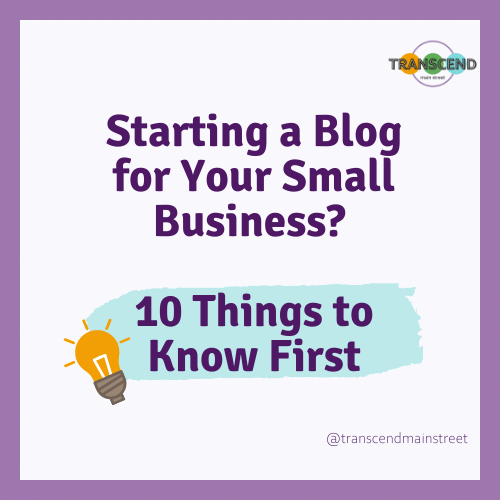

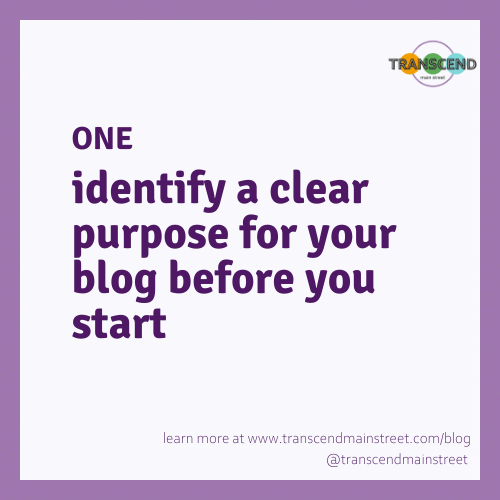

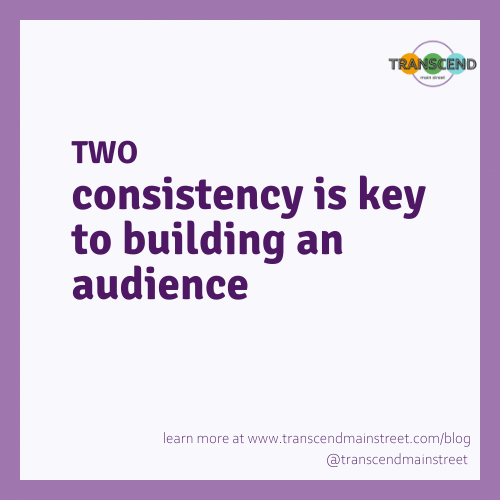

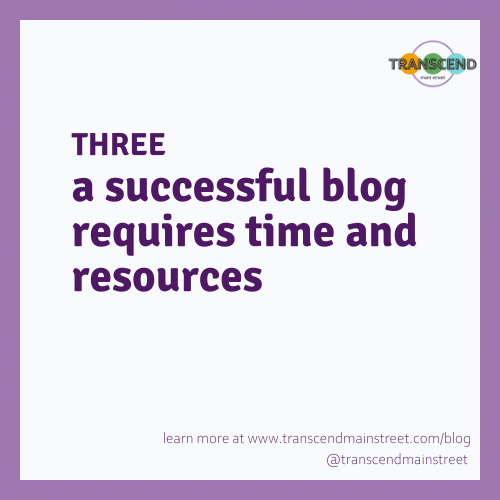

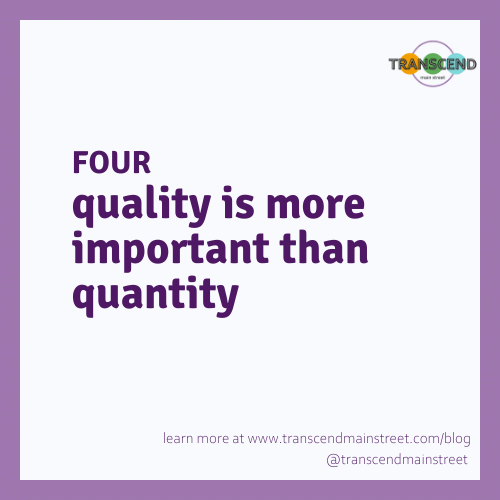

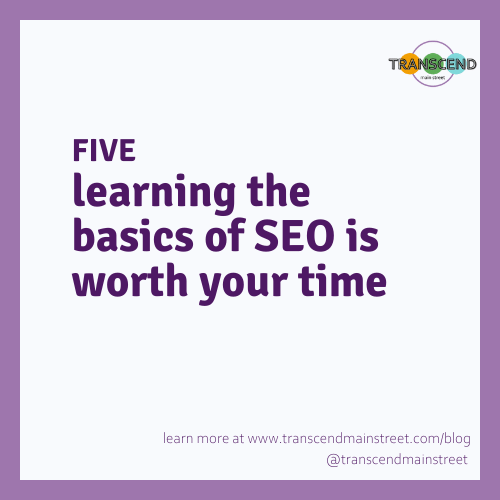

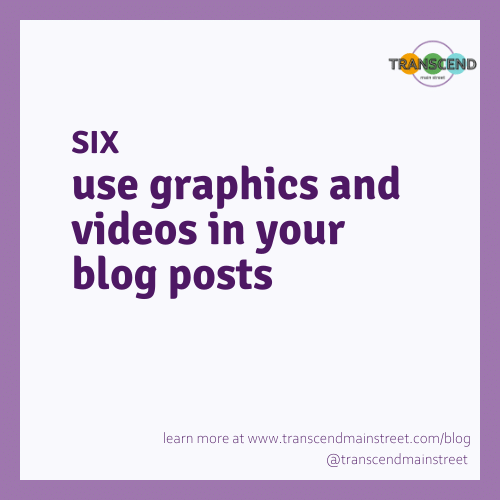

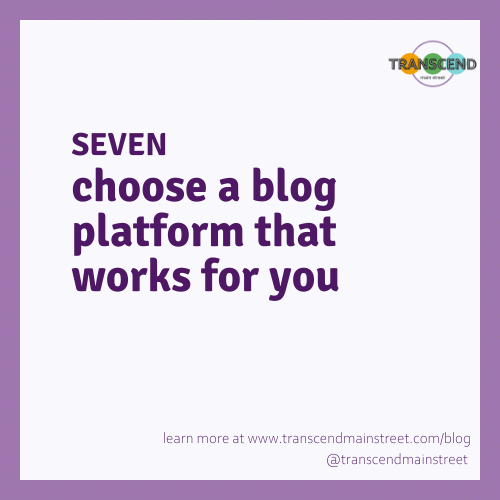

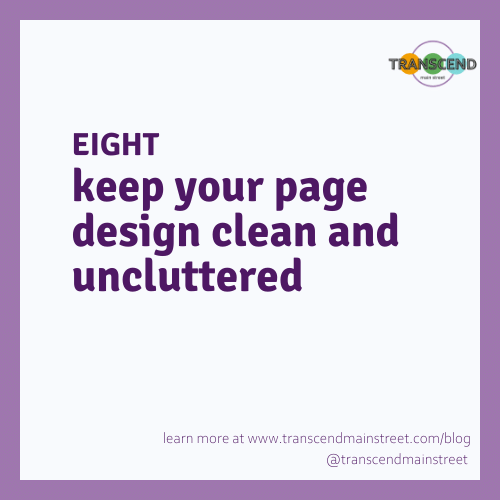

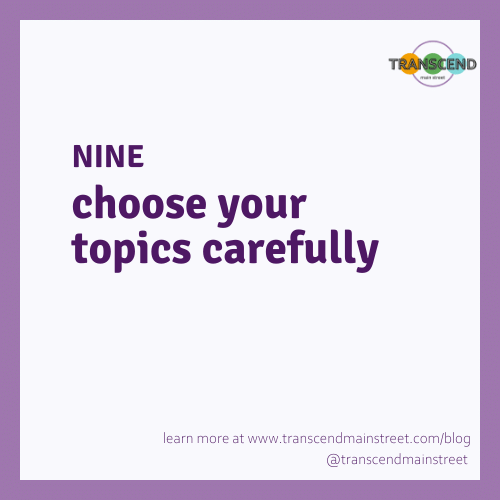

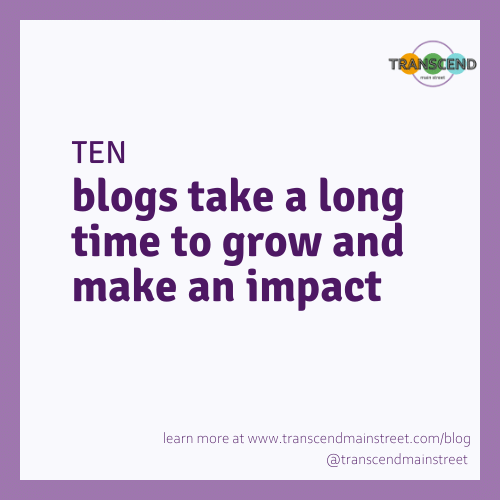




Kommentare